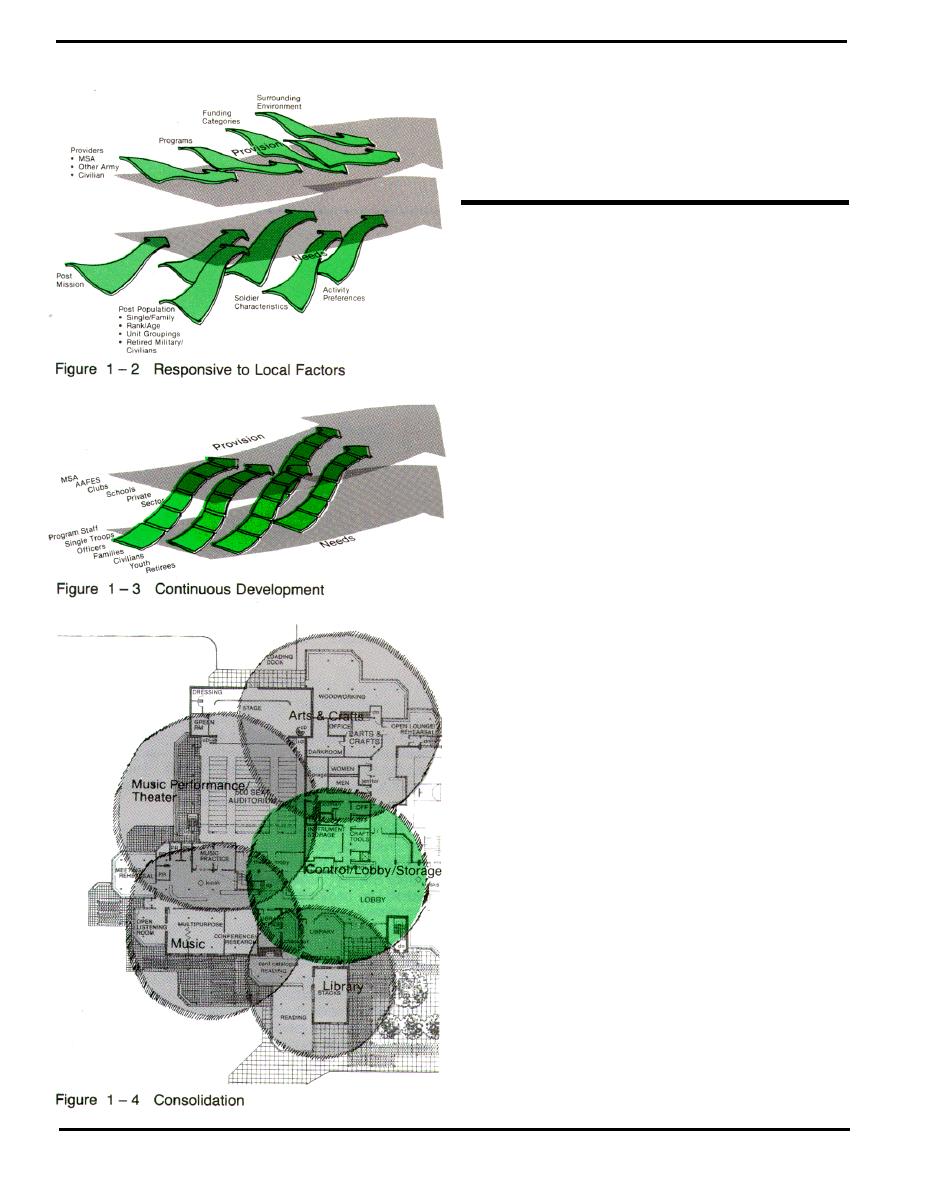
Chapter 1
1-2
Planning Principles
The role of Morale Support Activities in developing the
community system is to stimulate, coordinate and sup-
port the activities which build a sense of community.
The planning of this system, and the development of
Community Activity Centers, should be based on the fol-
lowing key principles:
a. Responsive to Local Factors. Providing good
community life requires coordination among, and
response to, many factors to achieve an appropriate
local pattern. These factors include the user needs of
the diverse groups within the population, their activity
preferences as they change over time, the characteristics
and evolution of the post mission, and the multiplicity of
provider organizations which must be involved (see fig-
ure 1 - 2).
b. Continuous Development. Development of Com-
munity Activity Centers is a continuous and evolving pro-
cess directed toward providing the programs, services
and facilities that best suit the needs of the community.
A community framework is required to guide the develop-
ment of the community system, and to enable it to
respond to shifts in needs and available resources. The
community system must be designed with flexibility in
order to accommodate future requirements. This flexibil-
ity may be achieved through the additive, phased con-
struction of facilities. (see figure 1 - 3).
c. Variety and Personal Choice. People's quality of
life and their ability to grow are dependent on the oppor-
tunity to make choices, particularly in leisure-time activi-
ties. To maximize this potential, the community system
must provide a mix of functions from which individual
users can choose. This mix of activities should be highly
visible, convenient and fit easily into a pattern of daily
life.
d. Consolidation. Suitable programs previously oper-
ated and accommodated separately should be consoli-
dated as much as possible. This kind of Community
Activity Center will enable more programs to be provided
over longer hours for the same cost. In particular, this
will achieve: both initial and long term facility cost sav-
ings, by eliminating duplication of services; staffing econ-
omies; coordination, cross-fertilization and improvement
of programs; increased program use, availability and
convenience for all installation population groups; and
the development of the sense of community (see figure
1-4).
Page 1-2 DG 1110-3-142


 Previous Page
Previous Page
